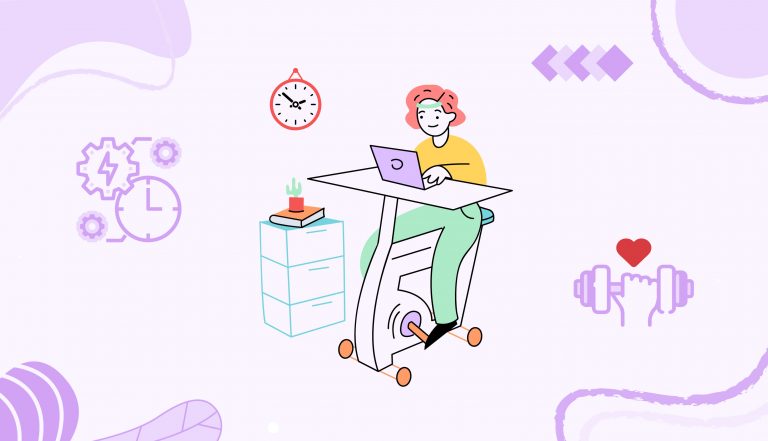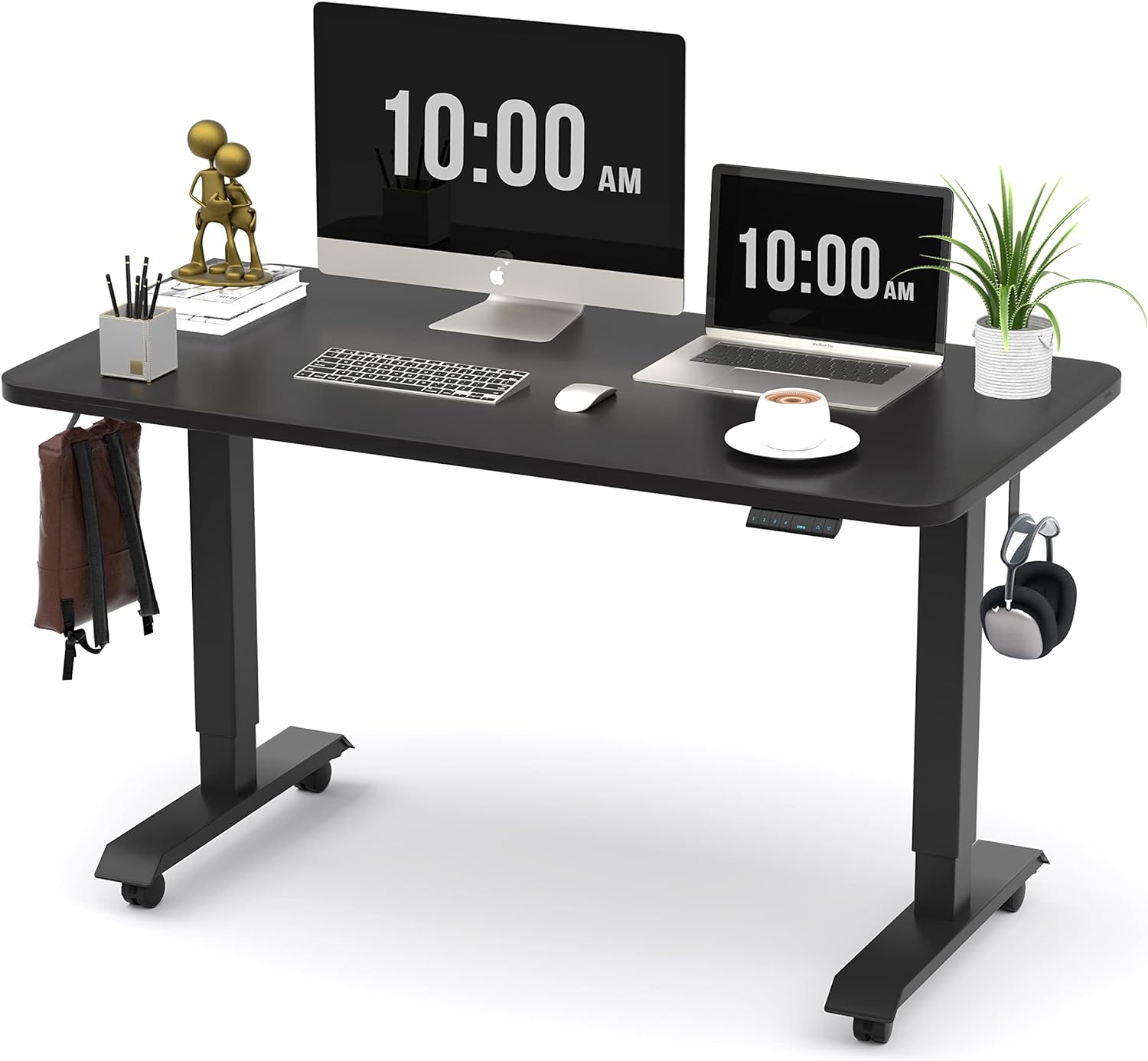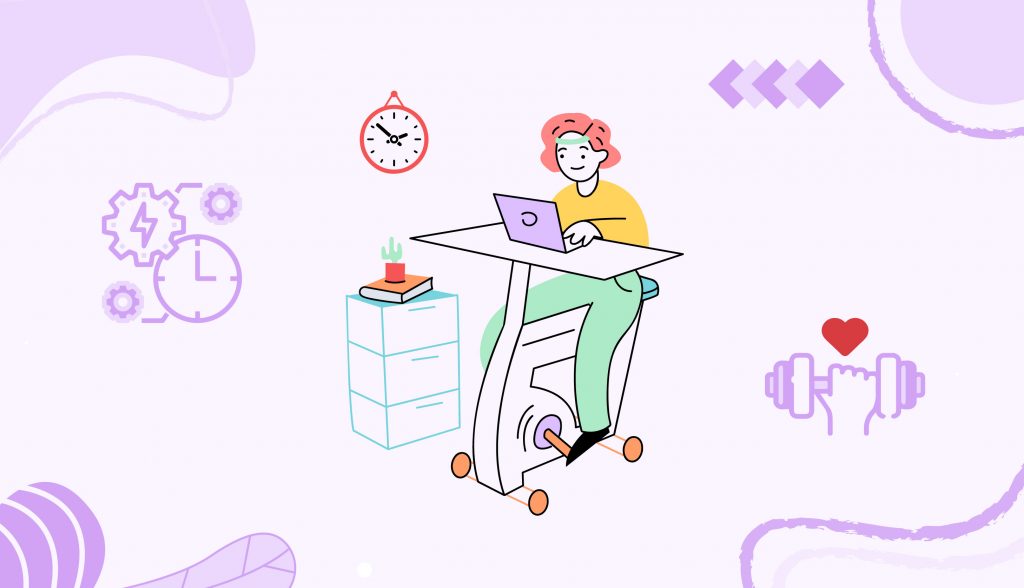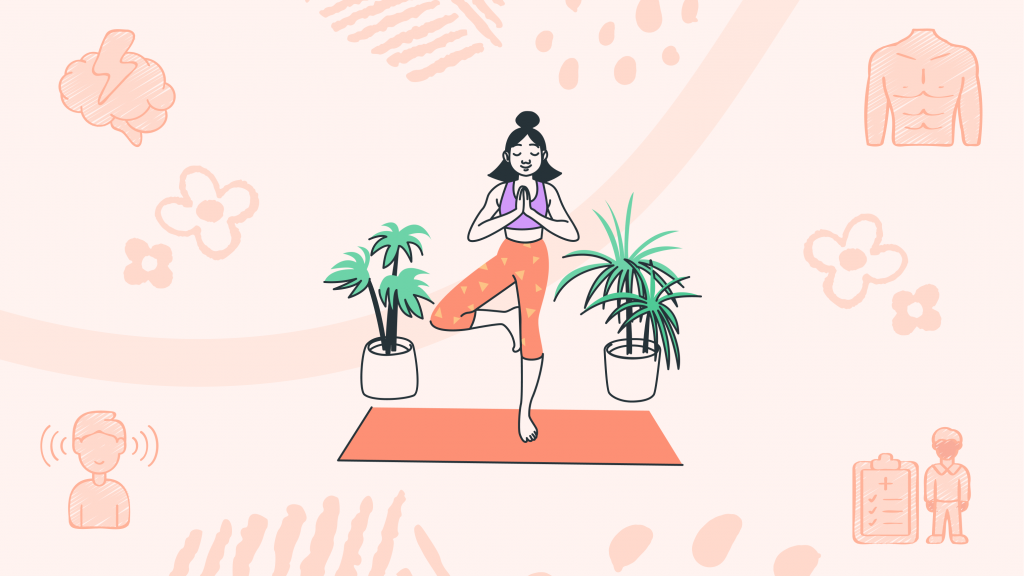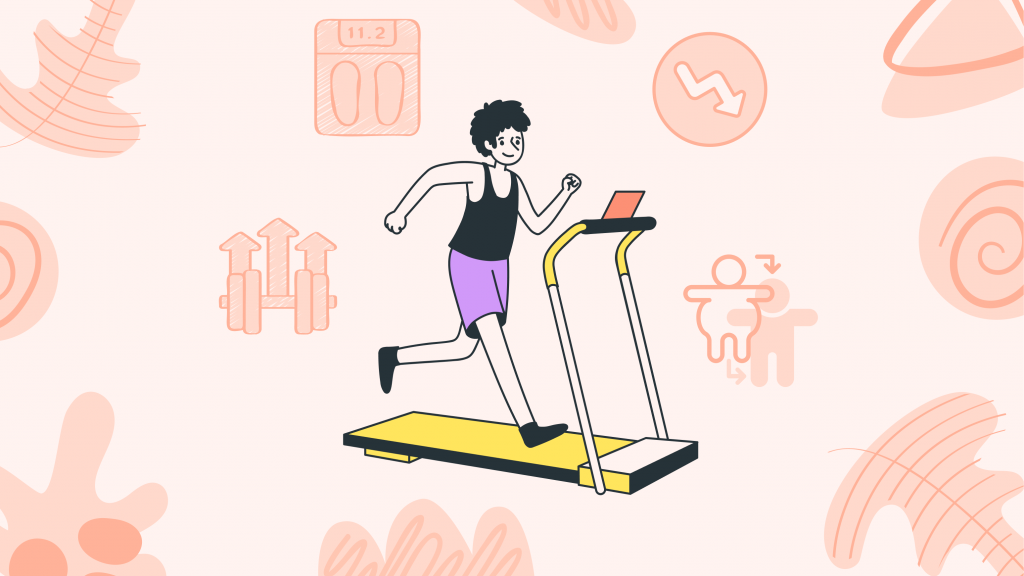We all must have come across a behavioral phenomenon called a sedentary lifestyle.
In times, when we are living a life of comfort, we often get ourselves trapped in this lifestyle where we do little to no body movements during our entire day. This is where we dig a hole for ourselves and put our physical and mental health at stake.
On top of it, we end up attracting complex diseases that are listed in the category of sedentary lifestyle diseases.
To understand them in depth, let’s get to the bottom of it and see how we unknowingly invite them into our lives and what we can do to live a life on the other side of the spectrum, which is—living a physically active and healthier life.
What is a Sedentary Lifestyle?
A sedentary lifestyle is defined by extended periods of sitting, which hinder regular physical movement. When we restrict ourselves to our seats and chairs throughout the day, avoid moving to places, and do little to no physical activity in between, we are becoming the victims of a sedentary lifestyle.
It is understandable that in times when technology and automation are there to serve us at every step, it is quite common for us to remain tucked in our respective seats. But until we realize the serious implications of our sedentary lifestyle, we won’t be able to make the necessary adjustments.
Also, it is important for us to understand that we cannot escape this phenomenon even if we indulge in a physical workout for an hour or so. Why? Because a physical workout of certain period doesn’t justify our extended sitting or physical inactivity.
When we stretch our sitting hours beyond six or seven without making sufficient moves, knowingly or unknowingly, we are adopting a sedentary lifestyle.
How Does an Inactive Lifestyle Affect Your Body?
#1: Effect of Sedentary Lifestyle on Physical Health
Considering the ill effects of a sedentary lifestyle, there’s a whole list of ailments and diseases we attract when we choose to stick by our chairs and couches.
You’ll be surprised to know how deep we get into the black hole of a sedentary lifestyle and land our bodies and minds into complex health conditions when we choose to remain inactive on the part of our body.
Here’s a list of health issues that we attract when we remain active throughout the day:
- Weight Gain
- Heart Diseases
- Musculoskeletal Diseases
- Type-2 Diabetes
- Weight Gain:
The first and foremost impact of a sedentary lifestyle on our bodies is weight gain. We tend to gain weight when we don’t indulge in a physically active routine.
Once we start gaining weight, we might not know the exact point at which we enter the bracket of obesity. Obesity is when calorie intake is greater than calorie expenditure due to inactivity, and the body tends to store the excess calories in the form of fat.According to the World Health Organization (WHO), more than 1.9 billion adults worldwide are overweight, and over 650 million are obese, which shows how prevalent this condition is and must be dealt with proper training and guidance.
- Heart Diseases:
A sedentary lifestyle is when we lack physical activity throughout the day. No physical activity means poor blood circulation. And poor blood circulation means increasing the risk of hypertension—leading to complex and serious heart conditions. According to the American Heart Association, individuals who are inactive have a 50% higher risk of developing heart disease than those who are physically active.While spending our day on a couch, we may not realize how we are inviting serious ailments like high blood pressure, high cholesterol levels, and even stroke into our lives and getting entrapped in their clutches. - Musculoskeletal Diseases:
A report submitted by The Bureau of Labor Statistics suggested that musculoskeletal disorders account for 30% of workplace injuries and illnesses, with most cases linked to sedentary work environments.Choosing a sedentary lifestyle means making back pain, neck pain, and joint issues a part of your life. When we restrict our body movement and remain physically inactive, it can lead to poor posture, muscle stiffness, and imbalances. - Type-2 Diabetes:
If you are choosing to stick by your sofa, chairs, or couches, know that you are increasing the probability of developing type 2 diabetes. Lack of physical activity is a major reason for our bodies not utilizing insulin effectively. And when it happens, we are likely to suffer from elevated blood sugar levels.The Diabetes Prevention Program study showed that lifestyle interventions, including increased physical activity, can reduce the risk of developing type 2 diabetes by 58% in high-risk individuals. Physical activity helps improve insulin sensitivity and glucose metabolism—reducing our chances of falling victim to type 2 diabetes.
Pause and Think: How many hours a day do you spend sitting? How often do you engage in physical activity each week?
#2: Effect of Sedentary Lifestyle on Mental Health
The ill effects of a sedentary lifestyle are not limited to our bodies. They also affect our minds and impact them in an adverse manner.
Let’s find out how.
- Boredom
In our understanding, we think that sitting only makes us physically inactive; it is as partial as seeing only one color in the rainbow. Following a physically inactive lifestyle has a deep impact on our minds as well.We often slip into boredom when we choose to sit in a place for more than an hour. Boredom can be a sinkhole for us to get deeper into the thoughts of unworthiness, self-criticism, or other negative thoughts, for that matter—leading us to a poor self-image and establishing a negative relationship with ourselves.Here’s where we need to be alert while choosing to sit for longer hours, considering the fact that long sitting will have a negative impact on both our mind and body.
- Depression
Physical activity is a primary factor in our body’s release of endorphins. And when we limit our physical exertion beyond a certain point, we are depriving ourselves of the happy hormones that create the perception of pleasure and well-being. Here’s when we go deeper into the pitfall and land into depression.A sedentary lifestyle is often a trigger for many such conditions that directly or indirectly impact our mental health. It could be low energy levels, social isolation, etc., and when we turn a blind side to our sedentary lifestyle, this is when we cause the maximum damage to our mental health and get to the extreme end of the depression.
- Anxiety
Lack of physical exercise also contributes to stress and anxiety. Here’s the other side of the coin: physical activity and alertness reduce the stress hormones (adrenaline and cortisol), multiplying the effect of being happy and content. But when we limit our physical activity and indulge in prolonged sitting, we are more likely to become the victims of anxiety.
A study published in the journal Anxiety, Stress & Coping has found that regular exercise significantly reduces the level of anxiety.
- Cognitive Decline
Cognitive decline is when there’s a stark decline in our ability to perform basic cognitive functions (memory, attention, decision-making, etc.). When we keep on sitting for longer durations, it leads to reduced blood flow to the brain. This is when the process of delivering nutrients and oxygen to the brain is hampered, resulting in multiple conditions and disorders.
A study published in the Journal of Alzheimer’s Disease suggested that people who remain physically active have better cerebral blood flow, which is responsible for improving cognitive function.
Pause and Think: Do you experience feelings of depression or anxiety? How often do you feel mentally fatigued or lack focus?
Effective Ways to Reduce Your Sitting Time
Now, let’s talk about how to reverse the scenario of a sedentary lifestyle. Considering the modern-day requirements and facilities, there’s a lot we can do and step aside and enter into a healthier way of living.
#1: Using a Standing Desk
When working in a corporate office, you have to be seated in one place and complete the tasks that have been assigned to you. It requires conscious effort to break this setting and adopt a lifestyle that brings a balance between your work and health. One such creative resort is to use a standing desk for your work, even if it has to be for a certain period of time. When you work while standing, the chances of you moving to places increase. Also, it’s a great way to break the pattern of prolonged sitting—benefitting you both in meeting your work targets and remaining active during your work.
A study in the Journal of Occupational and Environmental Medicine reported that employees who prefer to use standing desks for their work have experienced reduced back pain and witnessed increased energy levels.
#2: Choose Active Commuting
Engaging in any form of physical activity makes it more likely for you to remain active throughout the day. When you choose active commuting, it becomes nearly impossible to get into the temptation of lazing around or becoming a couch potato. Depending upon the work distance, you can choose to walk or commute by bicycle. If you are anyway relying on public transport to commute to work, you can fix your stop at a certain point to add extra steps so that you include walking in your daily commute.
A study from the British Journal of Sports Medicine found that people who prefer to walk or commute by bicycle have lower BMI and body fat compared to those who commute by car.
#3: Exercise while watching TV
Incorporating creative habits to stay active during certain times can do wonders. For instance, you can choose to do stretches and basic body exercises while watching TV. It might seem trivial on the surface, but it leaves a great impact when it comes to keeping ourselves physically active.
Let’s have a brief moment of contemplation:
Suppose you are sitting and watching a series on your TV. And then, suddenly, you felt an urge to drink a glass of water. Do you think you’d be quick enough to go to the kitchen to grab a glass of water, in contrast to when you are standing and doing stretches?
#4: Active Breaks during Work
When we talk about taking breaks at work, it might appear unproductive at first. But on having a closer look, you’d know that taking mini-breaks in between work will not only let you break away from a sedentary lifestyle but also refresh your mind to come back to work with greater energy and vigor. You can execute it by scheduling short walks and stretching between the tasks.
A study was conducted where it was found that employees who took short breaks at work witnessed better moods and reduced fatigue compared to those who followed a sedentary lifestyle.
#5: Take the Stairs
If you struggle to find separate time for exercise or physical activity, you can always start by incorporating habits that can benefit you on the health front. Taking the stairs to the office or anywhere you go is one way you can drift away from a sedentary lifestyle. Ditching lifts and elevators can help you meet your fitness targets to some extent, if not fully.
You must leave your reliance on lifts and elevators for the instances where there are time constraints. To ground our suggestion, here’s a study by the European Society of Cardiology that says taking stairs can improve cardiovascular fitness and reduce cholesterol levels.
#6: Schedule Walking Meetings
Engaging in any form of physical activity makes it more likely for you to remain active throughout the day. When you choose active commuting, it becomes nearly impossible to get into the temptation of lazing around or becoming a couch potato. Depending upon the work distance, you can choose to walk or commute by bicycle. If you are anyway relying on public transport to commute to work, you can fix your stop at a certain point to add extra steps so that you include walking in your daily commute.
A study coming from British Journal of Sports Medicine has found that people who prefer to walk or do workplace commute by cycle have lower BMI and body fat compared to those who commute by car.
#7: Choose Active Commuting
Scheduling walking meetings can be great addition to your anti-sedentary lifestyle regime. If you are someone who organises the office meetings, you know that outdoors can be a great option to discuss new agendas and discuss the subjects that require out-of-the-box thinking.
Exercises for a Sedentary Lifestyle
An easy and most effective way to switch to a healthy lifestyle is to indulge in regular exercise.
#1: Walking
To reverse the equation, you can start with a simple walk. Including a 10-15 minute brisk walk can lend you great assistance in combating a sedentary lifestyle. You can gradually increase your walk time or walk intensity to further your practice. It will offer you multiple health benefits, such as burned calories, increased stamina, and improved heart health.
#2: Jogging
If you are at an intermediate level, you may start with a regular jog. The intensified form of walking concludes with a jog, which can greatly help in improving metabolism, cardiovascular, and mental health at once. When you choose to go for a daily jog, you are working on strengthening your bones and muscles. Also, it will have visible effects on your mental health and sleep quality.
#3: Yoga
Yoga is an excellent resort for working on your body’s strength, flexibility, and balance. You can start with basic stretches and advance your level when your body is attuned and ready for deep practice. It is a great way to reduce your stress and promote relaxation. Also, with this, you can have greater dimensions of awareness and mindfulness. Aim to work for 20-30 minutes a day while gradually increasing the time you invest in yoga.
#4: Strength Exercises
If you are a gym person and want to exert in a gym, choose strength exercises. You can easily beat the sedentary lifestyle with exercises like bodyweight squats, push-ups, lunges, and so on.
For people who are more inclined towards gaining muscle mass and want to boost metabolism, strength exercises are the key to improving your overall strength and endurance. Start with a basic round of exercises, and then gradually, you can increase the number of repetitions to attain specific results.
#5: Cardiovascular Exercises
When you are determined to get visible health results, go for cardiovascular exercises. It includes exercises like cycling, swimming, and dancing, which work wonders in terms of building endurance and burning calories. You can choose any activity and then continue to practice it at moderate intensity for a while. Slowly, you can increase your exercise time and intensity to level up your physical training.
#6: Desk Exercises
If you are in a regular job and struggle to find time for your physical workout, you can start with desk exercises in your spare time. It will motivate you to advance to the next level of physical training, and till the time you are waiting for the transition to happen, you can reap the benefits of lifts and stretches from your desk.
Desk exercises are aimed at improving your blood circulation and raising your energy levels. To name a few, seated leg lifts, chair dips, and neck stretches are the perfect examples of desk exercises that can help you in advancing your active lifestyle initiative.
Also, long sitting can be hard on our back, butt, and overall body posture. Choosing a foam cushion is always a great way to add comfort to our long sitting, other than maintaining a balanced approach where we choose to remain physically active.
Tips to Combat Sedentary Habits
Starting with the exercise regime may require a certain level of initiative and determination. If you are committed to working towards a physically active regime, you can get started with these quick tips to slip out of the sedentary lifestyle.
- You can participate in household activities like cleaning, gardening, laundry, cooking, home organization and so on.
- Take stairs to the workplace to ensure you include enough workouts for the day.
- Make sure you go for a walk during your lunch hour if your work life is promoting a sedentary lifestyle (spare time).
- Cultivate hobbies like playing games on PlayStation that include body workouts in a fun way.
- Use gym facilities in your office, participate in playtime, and take time to go for quick rounds in between working hours.
- Prefer to walk when you take any kind of phone calls.
Conclusion
Now you know that following a sedentary lifestyle has been doing more damage to your mind and body than you ever thought. When you choose prolonged sitting, you put your mind and body at a higher risk. This is when choosing effective and creative ways to combat a sedentary lifestyle becomes necessary. No matter what situation and setting you are in, you can always choose to remain physically active or include various ways to reduce your sitting time.
Give serious thought to making a shift from a sedentary lifestyle to an active lifestyle, and you’ll be miles away from hassles that come uninvited in our lives when we choose an inactive lifestyle.
Sources:
- Dr. Mfrekemfon P. Inyang, Department of Human Kinetics And Health Education and Okey-Orji, Stella, Faculty of Education, University of Port-Harcourt. Choba, Rivers State, Nigeria: Sedentary Lifestyle: Health Implications
- Akindutire. Isaac Olusola, Department of Human Kinetics and Health Education, Faculty of Education, Olanipekun, Johnson Adetunji, Faculty of Education, Ekiti State University, Ado-Ekiti, Nigeria : Sedentary Life-Style as Inhibition to Good Quality of Life and Longevity
- Research Gate: Interventions to Reduce Sedentary Behavior













